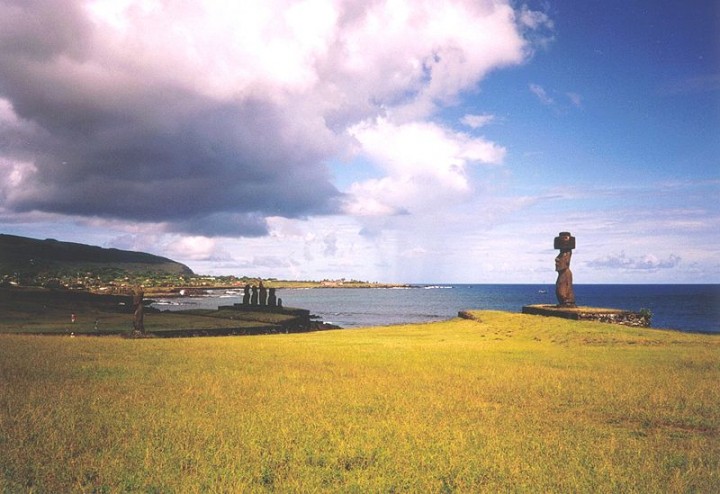 When I was in South America, one place I missed was Easter Island. If you want to go here I believe flying LAN Chile is the way to go as they give you a free stop over if you’re flying from Australia. We flew Aerolinias Argentinas (one thing I hope to NEVER do again) and instead I got to see New Zealand Airport. You live and learn… Moving on… I want to tell you why Easter Island interested me so much.
When I was in South America, one place I missed was Easter Island. If you want to go here I believe flying LAN Chile is the way to go as they give you a free stop over if you’re flying from Australia. We flew Aerolinias Argentinas (one thing I hope to NEVER do again) and instead I got to see New Zealand Airport. You live and learn… Moving on… I want to tell you why Easter Island interested me so much.
Easter Island, or Rapa Nui (the native name), was discovered by a Dutch ship on Easter Sunday in 1722 inhabited by around 3,000 people in war over scarce food resources and surrounded by over 600 of the six-meter high stone statues (that occupy every photo and postcard that leaves the island).
How did it get like this? Well the first settlement on the island was by probably one boatload of 20-30 people 1,500 years ago, but as populations increased and became separate villages, competition arose in the form of ‘a recognizably modern form: competitive monument building.’[1]
Building and transporting the statues involved chopping down trees and more and more trees were cut down until they were all gone ‘quite suddenly, the society collapsed’ as without wood they ‘could no longer fish, make cloth, or build houses, so their diets became impoverished… [and] deforestation also led to erosion, reducing soil fertility and crop yields…’ so basically ‘population growth and increasing consumption of resources, driven by political and economic competition, led to sudden environmental and social collapse.’[1]
As David Christian notes, ‘the most horrifying aspect of this story is that the islanders and their leaders must have seen it coming. They must have known as they felled the last trees that they were destroying their own future and that of their children. And yet they cut the trees down.’[1]
What do you think: ‘Does Rapa Nui provide an appropriate parable for thinking about the larger trajectory of human history?’[1]
References:
[1] David Christian, Maps of Time. pp. 472-475. David sourced this story from Clive Pointing in Green History of the World (1992)
Top picture:
Moai at Rano Raraku |Source = from en:Image:Moai Rano raraku.jpg taken during January 2004
Second picture:
Photo made by de:Benutzer:Makemake and uploaded by him on 18. Dec 2004
Both pictures are licensed under the Creative Commons Attribution ShareAlike 3.0 License. In short: you are free to share and make derivative works of the file under the conditions that you appropriately attribute it, and that you distribute it only under a license identical to this one. Official license

Yup – you got that Juliet. So do the Maya, who also developed a life-style and culture that led to a quick collapse about 800AD following an extended drought leading to starvation, peasant revolts, warfare etc etc In an ironic fashion this could be the true reminder for us in 2012 presently highlighted by the Mayan Calendar …”and the band played on …”
I just entered a extended and thorough remark, and when I tried to distribute it my FireFox freaked out.
Crap! that sucks 🙁